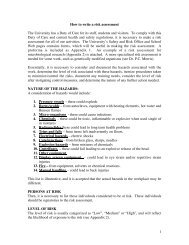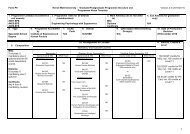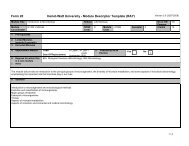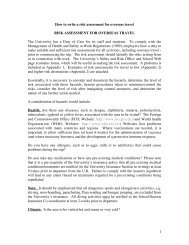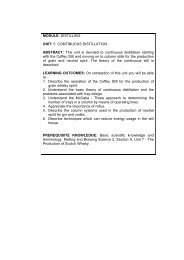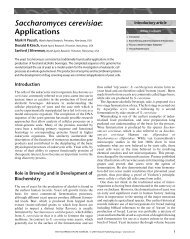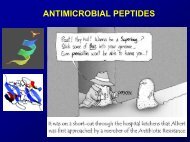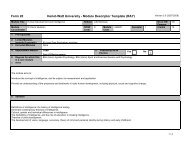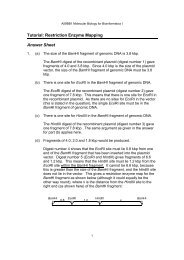Chapter 11 Production of Scotch and Irish whiskies: their history and ...
Chapter 11 Production of Scotch and Irish whiskies: their history and ...
Chapter 11 Production of Scotch and Irish whiskies: their history and ...
Create successful ePaper yourself
Turn your PDF publications into a flip-book with our unique Google optimized e-Paper software.
150 T.P. LyonsFigure 6. Changes in specific gravity, optical rotation, pH value <strong>and</strong> acidity during fermentation <strong>of</strong> a mash in theproduction <strong>of</strong> <strong>Scotch</strong> malt whisky (Dolan, 1976).Scotl<strong>and</strong> <strong>and</strong> Irel<strong>and</strong>, particularly the pot whiskydistilleries, rarely have <strong>their</strong> own yeastpropagation equipment. They rely on speciallypropagatedpressed yeast for use infermentations. In <strong>Scotch</strong> malt whisky distilleries,this pressed yeast is augmented, usually on anequal weight basis, with surplus brewery yeasttypically supplied in compressed form frombreweries that may be as far as 500 km from thedistillery.The requirements for a strain <strong>of</strong> Saccharomycescerevisiae yeast used in distillery practicehave been described by Harrison <strong>and</strong> Graham(1970). Apart from the obvious need to select astrain that maintains very high viability in thepressed state (containing 25% dry weight), othervery important properties <strong>of</strong> these strains areability to tolerate concentrations <strong>of</strong> ethanol onthe order <strong>of</strong> 12-15% (v/v) <strong>and</strong> the capacity tometabolize oligosaccharides such as maltotriose<strong>and</strong> maltotetraose in order to maximize theconversion <strong>of</strong> starch into ethanol <strong>and</strong> carbondioxide.Whisky worts usually have a specific gravityin the range 1.050-1.080, a pH value <strong>of</strong> around5.0, a total acid content <strong>of</strong> 0.1% <strong>and</strong> an opticalrotation <strong>of</strong> +30 o . After inoculation, the yeastcontent is 5-20 million cells/ml. The bacterialcount varies with the cleanliness <strong>of</strong> the plant <strong>and</strong>the extent to which the raw materials wereendowed with a microbial flora. <strong>Scotch</strong> grainwhisky fermentations create little if any foambecause <strong>of</strong> <strong>their</strong> large content <strong>of</strong> suspendedsolids. However, in most <strong>Scotch</strong> malt whiskyfermentations only a small proportion <strong>of</strong> thesuspended solids in the mash is retained in thefermentation vessel. These fermentations tendto foam <strong>and</strong> the distillers have resorted to theuse <strong>of</strong> various types <strong>of</strong> antifoams.Changes over the time course <strong>of</strong> a typicalfermentation in a <strong>Scotch</strong> malt whisky distilleryare depicted in Figure 6. Fermentation proceedsvigorously for the first 30 hrs, during which timethe specific gravity falls to 1.000 or below <strong>and</strong>the optical rotation to around zero. The sugarsin the wort are utilized in a particular sequencewith glucose <strong>and</strong> fructose being fermented first,followed by maltose <strong>and</strong> then maltotriose. Theremoval <strong>of</strong> sugars during fermentation <strong>of</strong> a<strong>Scotch</strong> grain whisky mash is shown in Figure 7(Pyke, 1965). Over the first 30 hrs the pH value,after declining to around 4.2, rises to about 4.5.During the first 30 hrs the specific gravity dropsat a rate <strong>of</strong> about 0.5 o per hour accompanied by







